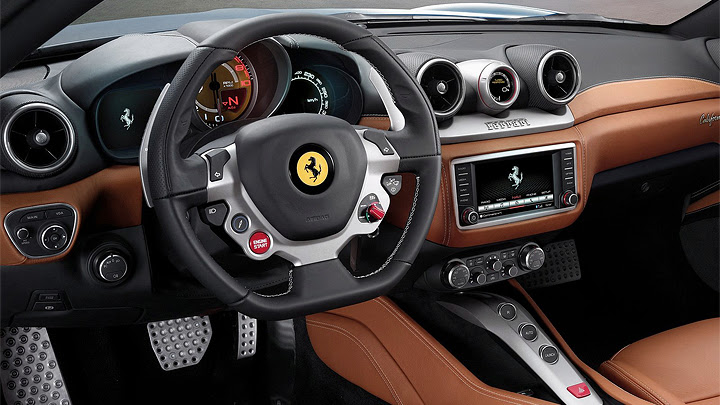
California has always had enough qualities to dazzle many people around the world, but they seemed to disappear when it was placed next to another Ferrari of its time. Even for an entry-level car, the roadster’s styling seemed a little clumsy, using nice ideas that were just poorly executed. Not to mention the just-ok powertrain. It still sold well enough to survive four years untouched, until the California 30 upgrade attempted to give a solution at least to the performance part – the surname refers to becoming 30 kg lighter and 30 PS more powerful. It was a great idea, once again, but still not enough. It didn’t reach the point of being better to wait a few more years and invest on its replacement, but it asked for a deeper work. This is what was finally done this time.
From whatever angle you look, the convertible manages to look better than its predecessor without pretending to be a different car. The front fascia received a more aggressive interpretation of its original shapes, taking a great chance to remind of its bigger sisters. The sides, in turn, were redesigned with focus on highlighting the rear: the side creases were a little flattened while the rear’s central portion became taller. It isn’t easy to notice, but when compared to the old car, it lends a more imponent look. The rear fascia left the circular lights untouched, but the lower portion was much better sculpted. Now the attentions are attracted to a wide diffuser, housing the exhaust pipes in two horizontal pairs.







There would be enough changes to justify adding an “M” after its name, like when 550 Maranello turned into 575 M, but Ferrari had something better up its sleeve. California not only received a whole new engine, but also the very first turbocharged propeller in a Ferrari since the iconic F40. This is an exclusive version of the twin-turbo V8 which Maserati uses in Quattroporte, with the “version” standing for the series of tweaks it received in order to suit a sports car. They ended increasing the displacement to 3855 cc and boost the roadster with 552 hp and 557 lb-ft, which are respectively 12% and 49% better numbers than California 30’s. Ferrari promises there will be almost no turbo lag, which certainly helps it to reach 100 kph in 3s6 and then a maximum of 315 kph.
Using a turbocharged engine also made California more frugal. Controlled by a dual-clutch, seven-speed gearbox (which has a launch-control mode) and using stop/start system, it achieves 15% more efficient everyday driving, besides making 29.6 mpg and emitting 250 g/km of CO2. The interior adds a new 6.5” touchscreen, redesigned console buttons and the Turbo Response gauge: placed between the central air vents, it shows a percentage of the available boost, rather than the simple pressure – a little déjà vu of Rolls-Royce cars. California T weighs 25 kg more than its predecessor, but 5 kg less than its original version. It’ll appear at the Geneva Auto Show with the definitive price tag, and already prepared to hit the streets.
Lançamento no Brasil (06/11/2014)
Alguns meses depois da apresentação no último Salão de Genebra, o roadster italiano teve sua importação oficial ao Brasil iniciada. Além das expressivas mudanças visuais, a California T justifica o preço de R$ 1,68 milhão com um redesenho interior inspirado no irmão maior F12berlinetta, como o texto acima apresenta. Seu maior destaque, no entanto, está escondido sob o capô: esta é a primeira Ferrari a usar um motor turbinado depois da lendária F40. O 3.8 V8 de dois turbocompressores é compartilhado com o sedã de luxo Maserati Quattroporte, e aqui gera a potência de 560 cv e o torque de 79 kgfm. Ele usa câmbio automatizado de dupla embreagem e sete marchas, e acelera de 0 a 100 km/h em 3,6 segundos.